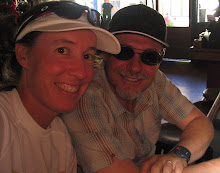The old Aymara man pulled again to start the outboard. Then again. And again. We are slowly drifting away from the small dock of the Isla de la Luna, Lake Titicaca, Bolivia. The wind is picking up, and if this motor doesn’t start soon, we are going to be out in the middle of this sea-size lake in no time.
We hired a boat to take us from a little town on the north end of the Isla del Sol to the ruins of an Inca priestess monastery on the island of the moon.
Titi Khar’ka means ‘Rock of the Puma’, this massive lake is named after the sacred rock…Titicaca. Legend has it that the entire lake originated by, or was filled by, three sacred springs called Fuente del Inca. The early Tiahuanaco culture, then the Kollas people (also called Aymara, who are still here today), and the Inca, thought the lake sacred, as the birthplace of the Sun and Moon. The Sun-god and Moon-goddess were both born out of the Rock of the Puma. Then the Sun-god rose into the sky from the Isla del Sol, and the Moon-goddess rose into the sky from the Isla de la Luna. The ancient town on the mainland, Kota Kahuana, Copacahuana, or most currently Copacabana, has been a resting site for pilgrims visiting the huaca (shrine) at Titi Khar’ka (Rock of the Puma) for thousands of years. The shrine, the sacred rock, and the springs are all on the Isla del Sol, or Island of the Sun. From the time of pre-Incan Tiahuanaco culture, through the Incan Empire, for the early Spanish colonialists, to the present, people from all over South America and the world have made pilgrimages to the Isla del Sol. This tiny island, with it’s small spring in the South, and its unremarkable looking rock and mesa in the North, might be thought of as the western hemisphere’s Mecca. It has the most, and longest, history of spiritual pilgrimage. The early Spaniards believed that the springs were a fountain of youth. Still, current pilgrims to the spring drink a cup of water from each of the fountains, or pour it over their heads for its healing properties. The ceremonial table huaca at the Rock of the Puma was used for sacrifices and rituals with the four directions. Pilgrims walk the length of the island, from the springs to the rock, to make their offerings and meditations at the birthplace of their culture.
A few days ago, we approached the town of Copacabana from the east. At the Tiquina Straits, we hired a barge to ferry our car across, then continued into town, arriving after dark.
The spring is at the top of a long Inca stairway that leads from the beach 205 steps (some dispute over this number, but I counted the steps when I walked up the stairs and I got 205) up to the stone fountain built by the Incas.
The next morning we began our walk to the Rock of the Puma on the north end of the island. We strayed from the Inca road periodically in order climb to the summit of each of the islands’ small peaks. Finally we reached the sacred rock and the ceremonial table to it’s south.
In the morning we rose early to sit in each of the direction-chairs at the ceremonial mesa, then watch the sun rise over the Rock of the Puma and the mesa. It was magical. Some sheep joined us just after sunrise.
The Isla de la Luna is much less visited than the Isla del Sol. The small community on the island jumped when they heard a boat coming. They assaulted us with souvenir buying opportunities from the moment we docked to when we walked out of the town toward the ruins.
With these thoughts spinning around in our minds, we stepped off the island back into the boat and pushed off….

No comments:
Post a Comment